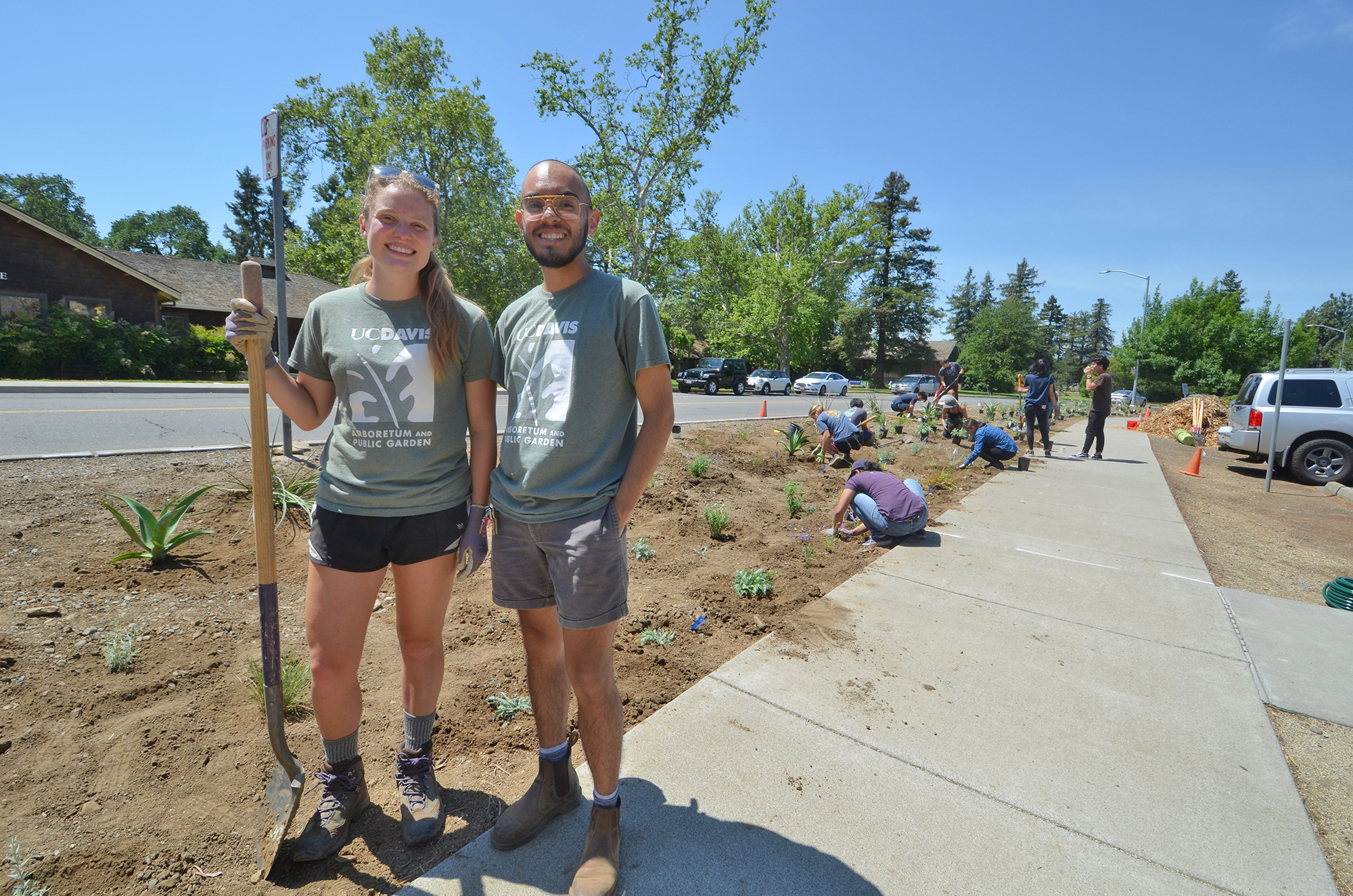Climate Tomorrow: The UC Davis Living Landscape Adaptation Plan
Support UC Davis Oaks Forever!

In the face of climate change, we are planning now to protect, grow and plant more of our campus's signature trees -- the mighty oaks. Learn more about and support the UC Davis Oaks Forever! campaign.
by Mary Burke, Director of Planning and Collections
Climate change has been described as the biggest threat to our planet, and for public gardens and landscapes that include horticultural plants that may be growing far outside their native range, it is a special concern. In California, climatic changes are already underway. Extended periods of drought are alternating with intense and frequent storms; in natural systems, forest species are gradually moving to higher elevations, bloom times of flowering plants have shifted, and patterns of mammal migration have changed.
At the UC Davis Arboretum and Public Garden, we are committed to environmentally responsible landscape management. Our team is working closely with the campus planning leadership at UC Davis to develop a 70-year plan that will allow us to transition the landscapes of UC Davis to a climate-ready campus. This UC Davis Living Landscape Adaptation Plan (LLAP) will help our professional staff adapt the campus landscape to the likely impacts of climate change, dwindling water supplies, aging plant populations and plant health threats.
The development of the LLAP has been a campus-wide initiative, engaging students, faculty, and staff.
In 2016, we launched a Climate Assessment Learning by Leading™ internship and began integrating students into the long-range planning for our campus. In addition, we have drawn on UC Davis faculty expertise and scholarship in climate modeling, plant science, water and soil systems, and the legendary environmental “know-how” at UC Davis in the development of the LLAP.
What the future will look like at the local level has become easier to see, thanks to the web-based Climate Adaptation planning toolkits provided by State of California's scientific and research staff (Cal-Adapt.org), along with even more localized climate studies done by Jim Thorne at UC Davis. This research suggests that in 2100, the climate of UC Davis may most closely resemble the current climate of Barstow, California in the western Mohave Desert (McBride & Laćan, 201).

Over the last year, our team has hosted thoughtful, wide-ranging conversations on four landscapes that cross all campus boundaries: Wildlands and Rural Landscapes, Ag & Research Fields and Roadsides, Learning Landscapes, and Central Core Landscapes (I.e. Lawns and athletic fields). Each landscape type has unique challenges ahead as we learn to adjust to a warmer, drier climate.
We have drawn on our research and conversations to create a number of climate adaptation goals for the UC Davis campus. These include:
A Transformed Canopy of Trees
Building on research done here at UC Davis and beyond, this plan proposes replacing highly vulnerable species on campus with trees that are better adapted to future conditions and provide the most environmental, social, and economic value in the future. To meet this goal, we plan to conserve especially valuable trees on campus, such as our redwoods and heritage oaks, change management practices to help all UC Davis trees bounce back from coming climate shocks, and implement slow system-level changes in the UC Davis tree canopy by planting trees that will suit the new climate.
A ‘Cradle to Ancients’ Plan for the Trees of UC Davis
Realizing the benefits (i.e. shading and beauty) of a thriving campus-wide tree canopy depends on tree survival. The LLAP proposes an aggressive program that targets growing top-grade nursery trees, top-notch preparation of all planting sites, excellent water, monitoring for pests and weeds, new student teams pruning young trees into promising, strong specimens, and professional crews managing and caring for the large mature trees. Similar plans for other campus landscapes will provide rich and diverse habitats across UC Davis.
Students and Community Teams Integrated into the System
The LLAP builds students and learning into the system from the start. As we enter a new time of uncertainty and change, our staff and student teams will work together to launch pilot projects, rapidly adapt and learn, and then share what they learn. We, in turn, will share what we learn here at UC Davis with a “network of networks”, via both national campus planning professional organizations and the larger international network of botanical gardens.
We look forward to sharing more information about the plan as the work continues.
